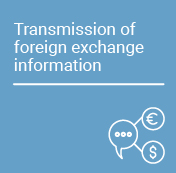Essays on Economic Policy (ESPE in Spanish) - What is the Fiscal Stress in Euro Area? Evidence from a Joint Monetary-Fiscal Structural Model
In the journal Essays on Economic Policy (ESPE) - we disclose the results and policy proposals that arise from academic research carried out at the Banco de la República. When you read us, always keep in mind that the content of our articles, as well as the analyzes and conclusions derived from them, are the sole responsibility of their authors. The material disclosed in our ESPE magazine does not compromise or represent the opinion of Banco de la República or that of its Board of Directors.
Abstract
I examine the importance of fiscal policy in stabilizing the Euro Area economy and the degree of interaction with monetary policy. The results provide solid evidence of a common fiscal reaction in the monetary union despite the lack of a formal fiscal union. I identify area-wide shocks and find statistically significant (endogenous) responses of fiscal policies to shocks. I also find strong evidence for interactions between fiscaland monetary policy. Said that, the nature of interactions depends very much on the shocks that hit the economy. At the same time, the way the two fiscal policies interact with monetary policy is also different and independent of each other. Furthermore, the spending multiplier is higher than the tax multiplier. Nonetheless, their relative efficacy has changed over time, with the spending (tax) multiplier falling (rising) since the onset of the Great Recession. To conclude, there are considerable differences in the nature of Euro Area monetary-fiscal interactions compared to the US. Not only are the impulse responses to different shocks significantly different, but also the fiscal multipliers vary a lot. Keynesian (or spending-oriented) fiscal policy is more effective in expanding output in the Euro Area while tax reductions are more effective in the US.

































































